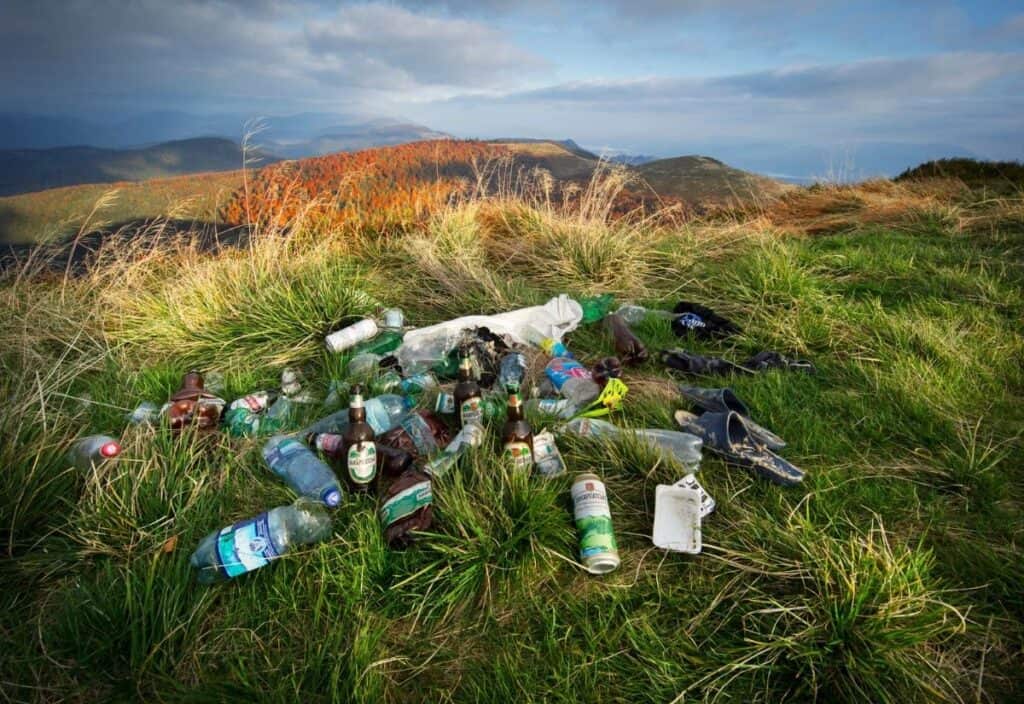Trail etiquette declines as social media hikers crowd scenic routes and turn once-quiet paths into busy, rule-bending photo stops. Viral posts are drawing hikers to remote spots faster than parks can adapt, often leaving behind damage that takes far longer to fix. As more people chase the perfect shot, the strain on fragile landscapes is becoming harder to ignore.
 Photo credit: panaramka.ukr.net, Depositphotos.
Photo credit: panaramka.ukr.net, Depositphotos.
With online influence shaping where people go and how they behave outdoors, responsibility now extends beyond the trail. Hikers with a large number of followers online are in a position to lead by example and shift the focus from likes to lasting impact on the environment and the community.
Social media drives hikers
Instagram and TikTok have transformed once-quiet trails into digital stage sets. Popular parks across the United States have seen an uptick in visitors after appearing in viral videos or influencer reels. Travel-focused content creators, in particular, play a major role in shaping hiking trends. Their visually polished content motivates followers to visit the same trails and snap similar shots.
Parks that attract more social media attention have reported visitor increases between 16% to 22% compared to those with fewer digital mentions. While major sites like Yosemite, Grand Canyon and Yellowstone have seen significant gains, the impact isn’t limited to headline parks. Lake Clark National Park and Preserve in Alaska, for example, saw a more than 180% rise in visitors as its online presence expanded.
Trail crowding and its consequences
While this growing interest has introduced new hikers to public lands, it has also caused a strain on lesser-known regions. In New Hampshire, the fall foliage season brings in millions of visitors hoping to catch the autumnal display. However, with that surge comes reports of litter, road congestion and trespassing, often tied to those pursuing the perfect photo. Local authorities have addressed this by closing certain roads to nonresidents and increasing patrols near popular viewpoints.
Surrounding communities feel the pressure too. Lodging and basic services in gateway towns often struggle to keep up with the visitor load, driving up operational costs for local programs and straining small tourism economies. While efforts are being made to redirect visitors toward less crowded areas, the high traffic in popular parks continues to stretch infrastructure and staffing limits.
The mixed impact of increased visibility
A growing number of visitors provides financial and cultural value to public lands. Entrance fees, souvenir purchases and local dining support park budgets and the surrounding economy. Increased foot traffic can also encourage greater public interest in conservation and outdoor recreation.
The surge in attention is beneficial in some ways, but it is also putting pressure on the landscapes, drawing crowds. Popular parks are dealing with congested roads, packed campgrounds and overused restrooms and water supplies. Rangers are working to manage growing waste and rising vehicle emissions. Preserving these spaces takes consistent staffing, funding and infrastructure support. As demand grows, the challenge is keeping nature accessible without exhausting its resources.
Common trail etiquette mistakes
Disruptive behavior on the trails isn’t always deliberate, but its effects add up quickly. Filming multiple takes, blocking narrow paths or leaving tripods in the middle of walkways slows foot traffic and frustrates other hikers. Even biodegradable waste like fruit peels can damage ecosystems and attract wildlife to human areas.
Noise is another growing concern. Some visitors play music aloud, turning quiet trails into noisy spaces. Drone use is also on the rise, often violating park rules, creating safety issues and disturbing both people and animals.
Leave No Trace in action
Good trail etiquette starts with staying on marked paths. Leaving the trail damages native plants and contributes to erosion. Visitors are encouraged to pack out all trash, including seemingly harmless items like fruit peels and shells, which can disrupt wildlife behavior and degrade the scenery.
Minimizing disruption also means keeping noise levels down. Using headphones helps preserve the natural quiet. Leashing dogs in designated areas protects both animals and fellow hikers. Uphill hikers should always be given the right of way to maintain smooth trail traffic.
These behaviors reflect the seven principles of Leave No Trace, a framework that encourages visitors to enjoy the outdoors while minimizing their impact. The guidelines promote preparation before trips, traveling and camping on durable surfaces, disposing of waste properly, leaving natural objects as they are, managing campfires responsibly, respecting wildlife and being considerate of others on the trail.
Mindful sharing on the trail
Social media influences how people experience the outdoors, and how they share it matters. Avoiding location tags on posts about remote or sensitive areas helps prevent sudden crowds that can overwhelm fragile landscapes.
The way hikes are portrayed online can set the tone for others. Content that highlights respectful behavior and responsible practices encourages better habits on the ground. Posts that focus on preparation, trail courtesy or environmental care send a clear message that the outdoors isn’t just a photo backdrop. Even subtle choices in how a trail is framed can influence what others do when they visit.
Preserving the trails for everyone
As digital platforms continue to inspire people to explore the outdoors, the responsibility to protect these spaces grows alongside the trend. The solution isn’t to step back from sharing nature but to do it with care, clarity and respect. Whether on the trail or online, every decision leaves a mark. Practicing basic etiquette, following Leave No Trace principles and thinking before posting can help ensure that wild places stay wild, even as more people seek them out.
A luxury travel, food and adventure journalist with a passport full of stories from over 46 countries, Mandy specializes in uncovering unforgettable experiences across the globe. With a deep love for the Far East and a diver’s eye for hidden worlds, she brings readers along on immersive journeys that blend indulgence with discovery, and she shares it all on Ticket to Wanderland.
The post Trail etiquette declines as social media hikers crowd scenic routes appeared first on Food Drink Life.







(0) comments
Welcome to the discussion.
Log In
Keep it Clean. Please avoid obscene, vulgar, lewd, racist or sexually-oriented language.
PLEASE TURN OFF YOUR CAPS LOCK.
Don't Threaten. Threats of harming another person will not be tolerated.
Be Truthful. Don't knowingly lie about anyone or anything.
Be Nice. No racism, sexism or any sort of -ism that is degrading to another person.
Be Proactive. Use the 'Report' link on each comment to let us know of abusive posts.
Share with Us. We'd love to hear eyewitness accounts, the history behind an article.